Dallas, TX is thought for its subtropical weather, with warm summers and slight winters. This makes it the correct location to plant trees that can resist a range of temperatures and weather situations. If you’re seeking to add a few greenery for your panorama in Dallas, TX, you need to pick out bushes which are hardy and can thrive on this region. With so many options to pick out from, it is able to be difficult to recognise which bushes will work quality on your wishes. To help make matters less difficult for you, we’ve got compiled a listing of the 10 hardiest timber that could live on and thrive in the Lone Star State. From the enduring Texas live very wellto the sweetgum tree, we’ll explore the advantages of every tree, such as their growth styles, length, and typical appearance. By the stop of this publish, you may be ready to add a few colour and splendor for your Dallas panorama with these hardy trees.
Dallas, Texas, a vibrant metropolis located inside the heart of the Lone Star State, is understood for its wealthy records, numerous tradition, and booming financial system. With a population of over 1.Three million citizens, Dallas is a bustling town that gives a completely unique combination of city sophistication and southern attraction.
When it involves landscaping and gardening in Dallas, the climate plays a important function in figuring out the types of bushes which can thrive inside the location. Dallas reports a subtropical climate, characterised by hot summers, moderate winters, and relatively low precipitation. Summers are long and sweltering, with average temperatures attaining the high 90s°F (35°C) and on occasion soaring into the triple digits.
In assessment, winters in Dallas are commonly slight, with average temperatures starting from the forties°F (4-nine°C) for the duration of the day to the 30s°F (-1 to 4°C) at night. While blizzard is rare, occasional ice storms can arise at some point of the iciness months.
The climate patterns in Dallas, together with its warm and dry summers, can pose challenges for tree growth and survival. However, with careful choice and right care, it’s far possible to domesticate a thriving and picturesque landscape.
1. Dwell Oak (Quercus virginiana)
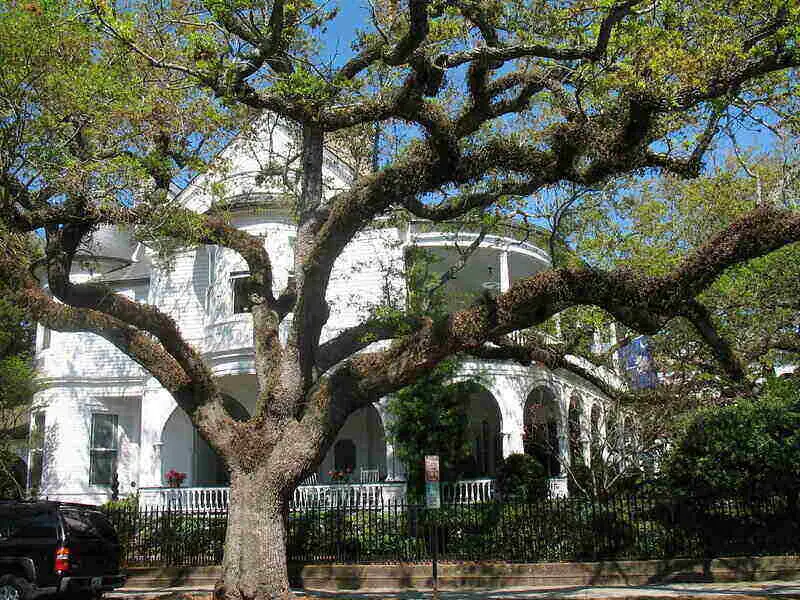

Dwell alrightis a conventional possibility for householders in Dallas. The resilience of this tree’s wooden and its capability to survive intense warm temperature and frequent tornadoes makes it an vital asset each summer time. Dwell alrightwooden are characterized by their thick, alternating leaves that are a vibrant green coloration and their distinctively elongated acorns.
Dwell o.K. Are a notable opportunity within the event you require an extended-lasting tree. They’re resistant to immoderate temperatures, require little care, and flourish in Dallas’s local weather. As a end result of live all right can live to tell the tale for tons of of years, it’s great to provide them loads of house to spread their large branches and deep roots.
- Hardiness zones: 7-10
- Solar publicity: Full sun, partial coloration
- Soil wants: Acidic, alkaline, loamy, moist, sandy, properly-tired soil, or clay soils
- Foliage: Evergreen
- Mature size: 40-eighty feet tall; 60-a hundred feet large
2. Cedar Elm (Ulmus crassifolia)
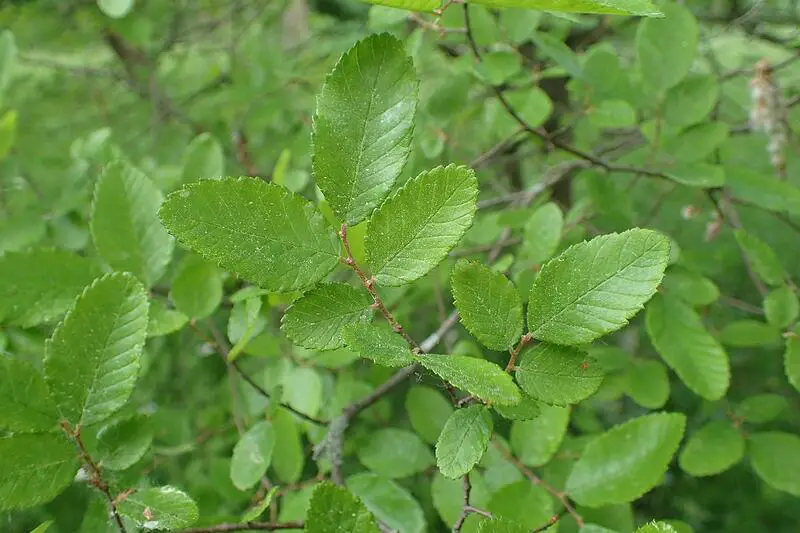

Moreover American elms, cedar elms are basically the maximum usual elm wooden in Texas, they usually may also be present in all elements of the nation’s jap, southern, and valuable areas. The cedar elm is greatest to distinctive wooden because of its adaptability to completely unique soil circumstances. Cedar elms are drought-resistant and supply welcome shade within the sizzling Texas sun.
In Texas, the cedar elm prospers as a local, resistant, and tremendous tree every inside the wild and in landscapes. Its dark inexperienced leaves have a difficult ground and transfer a splendid yellow in the fall in advance than falling to the lowest.
- Hardiness zones: 6-nine
- Solar exposure: Full sun
- Soil wishes: Alkaline, loamy, wet, sandy, properly-drained, or moist clay soils; can live to tell the tale in saturated grounds
- Foliage: Deciduous
- Mature size: 50-70 toes tall; 40-60 feet massive
3. Purple Oak (Quercus rubra)
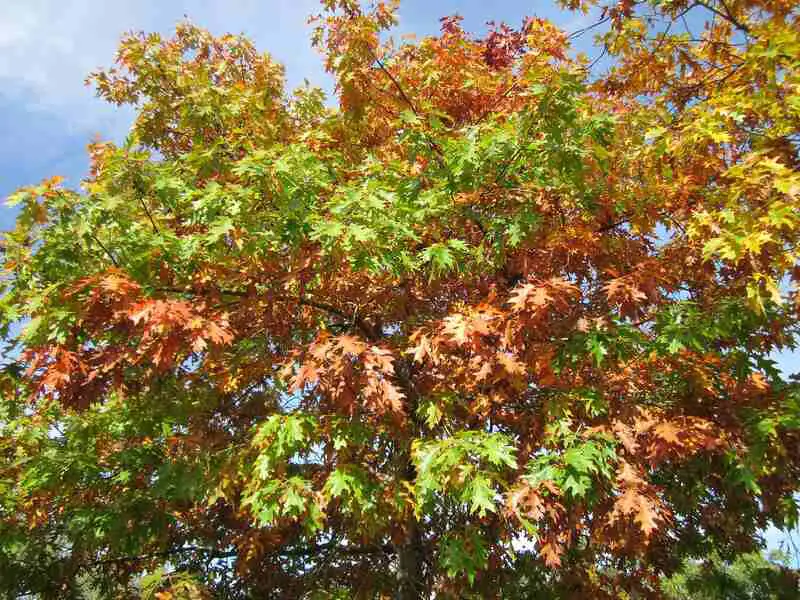

The pink okayis a widely wide-spread tree in Dallas due to its elegance and the coloration it gives. On a steamy summer time day, there’s nothing higher than exciting inside the cool shade of a crimson o.K.Tree while sipping a glass of iced tea. Purple alright are moreover great in Dallas as a result of the city’s slightly acidic soil is appropriate for these wood.
Purple all right require comparatively little water, making them drought-tolerant, they typically can get up to immoderate temperatures, which may be very helpful in North Texas with its sizzling summers. Due to their deciduous nature, pink o.K. Shed their reddish-brown leaves for the iciness. Acorns are produced by means of purple o.K.Wooden and are commonly fed on by means of wildlife once they fall to the bottom.
- Hardiness zones: three-8
- Solar publicity: Full solar
- Soil desires: Acidic, clay, loamy, moist, sandy, or nicely-drained soils
- Foliage: Deciduous
- Mature measurement: 60-eighty ft tall, 50-70 toes huge
4. Bur Oak (Quercus macrocarpa)


Picture Credit rating: Katja Schulz / Wikimedia Commons / CC BY 2.0
Bur okay are tall Texas-native wood with huge leaves and huge acorns. They’ll live to tell the tale every freezing temperatures and sizzling warm temperature whereas although requiring little in the exceptional way of tree care, making it a first-rate in shape for the Texas local climate.
As soon as planted, bur okay can survive for greater than one hundred fifty years. Giant, dark, curved leaves, corky, hard bark, and acorns the size of ping-pong balls are simply a number of the distinct alternatives of this tree.
Along with with the capacity to survive in dry circumstances, these local wood may additionally tolerate acidic soils, alkaline soils, loam, clay, and locations with poor drainage. As a sort of white oak, they’re clearly proof against flames. Their roots rarely cause points with sidewalks, curbs, or foundations.
- Hardiness zones: three-eight
- Solar exposure: Full sun
- Soil wants: Acidic, alkaline, loamy, sandy, nicely-tired, moist, or clay soils
- Foliage: Deciduous
- Mature measurement: 70-eighty ft tall; 70-80 ft large at adulthood
5. Chinese language Pistache (Pistacia chinensis)
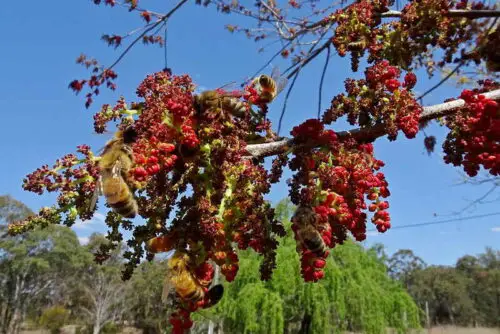

Probably the greatest colour wooden in Dallas is the Chinese language pistache. The Chinese language pistache tree is a ornamental medium-sized colour tree, grown mainly for its ornamental worth. It gives affordable shade, requires little tree care, and is frequently pest-unfastened.
New timber increase at a mean of two to three ft each 12 months, making the Chinese language pistache among the finest timber for Dallas due to its brief progress charge for an prolonged-lived species. The Chinese language pistache’s umbrella-like cover moreover facilitates to make it not unusual for landscapes.
Because the weather cools, the tree’s in-season inexperienced leaves redesign into colourful shades of orange, scarlet, and pink, making it a fave of Dallas residents for fall color. As a bonus, the Chinese language pistache can rise up to notably immoderate temperatures, making it a remarkable alternative for Texas summers.
- Hardiness zones: 6-7
- Solar publicity: Full solar, partial color
- Soil needs: Alkaline, loamy, moist, sandy, silty loam, well-tired, or clay soils
- Foliage: Deciduous
- Mature dimension: 25-35 ft tall; 25-35 feet big
6. Pecan (Carya illinoinensis)
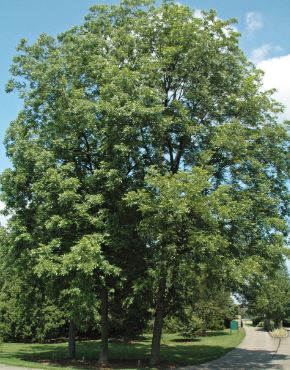
The pecan tree, scientifically called Carya illinoinensis, is a hardy tree that thrives in the Dallas, TX vicinity. Known for its delicious nuts, the pecan tree isn’t handiest a lovely addition to any panorama however also a valuable source of meals.
One of the motives why the pecan tree is well-proper for Dallas is its ability to tolerate the region’s warm and dry climate. Pecan timber have deep taproots that allow them to get right of entry to water from deeper soil layers, making them extra resilient for the duration of periods of drought. This adaptability to drought conditions is in particular critical within the arid climate of Texas.
The pecan tree is also capable of resist the occasional intense climate events which could occur in Dallas, together with heavy winds and storms. Its sturdy branches and robust root system assist it face up to these challenges, making it a dependable preference for owners and landscapers.
In addition to its resilience, the pecan tree gives aesthetic blessings. It has a broad and spreading cover that offers enough coloration, making it an ideal tree for growing a groovy and comfortable outdoor area. The leaves of the pecan tree are a rich, vibrant inexperienced, including splendor and vibrancy to any panorama.
Furthermore, the pecan tree offers the added bonus of manufacturing scrumptious nuts. These nuts are not most effective a fave for snacking but also can be utilized in a whole lot of culinary applications. From pecan pies to salads, the flexible pecan nut provides a satisfying taste and texture to many dishes.
When planting a pecan tree, it is essential to don’t forget its size and spacing necessities. Pecan trees can emerge as pretty massive, achieving heights of up to 70 feet and spreading their branches as much as 40 toes wide. Therefore, it’s far crucial to provide adequate space for the tree to develop and develop fully.
7. Mexican Plum (Prunus mexicana)

The Mexican Plum, scientifically known as Prunus mexicana, is a hardy and beautiful tree that flourishes in the Dallas, TX vicinity. This local tree is nicely-tailored to the Texas climate and offers several attractive functions that make it a popular preference for house owners and landscapers alike.
One of the standout characteristics of the Mexican Plum is its lovely display of white plants in early spring. These sensitive blossoms cowl the tree and create a picturesque scene, signaling the advent of warmer weather. The perfume of the vegetation is likewise a lovely addition to any outside area.
As the flowers fade, the Mexican Plum produces small, spherical culmination which might be a colourful deep crimson or red. These suitable for eating plums aren’t only visually attractive however also entice numerous flora and fauna, consisting of birds and butterflies. They may be harvested for non-public use or left for the wildlife to revel in.
In phrases of its bodily appearance, the Mexican Plum typically grows to a height of 15-25 toes with a variety of 10-15 ft. Its crown is rounded and dense, supplying sufficient color for the duration of the hot Texas summers. The tree has an typical swish and elegant form, making it a standout addition to any panorama.
Another gain of the Mexican Plum is its tolerance to various soil types, along with clay and sandy soils. It additionally reveals properly drought tolerance once set up, making it a low-preservation alternative for homeowners who want a tree that can resist the tough Texas climate situations.
8. Mexican Sycamore (Platanus mexicana)
The Mexican Sycamore, scientifically known as Platanus mexicana, is a majestic and hardy tree that thrives within the vibrant metropolis of Dallas, Texas. With its hanging appearance and amazing resilience, it has become a popular preference for house owners and landscapers alike.
One of the maximum tremendous features of the Mexican Sycamore is its big, coronary heart-fashioned leaves that shimmer within the daylight. These leaves provide adequate coloration throughout the scorching summers, making it a sought-after tree for developing cool and comfortable out of doors spaces. The leaves also boast a exclusive silver-gray colour on the bottom, including a touch of beauty to any landscape.
This tree is properly-acceptable for the unique climate and soil conditions of Dallas. It can tolerate each drought and flooding, making it an fantastic desire for unpredictable weather patterns. Furthermore, the Mexican Sycamore is incredibly proof against pests and diseases, including to its normal durability and coffee preservation requirements.
In phrases of size, the Mexican Sycamore is a quick-developing tree that can attain heights of up to 60 toes with a spread of 40 toes. Its extensive cover gives adequate color, making it an excellent choice for massive yards and open spaces. Its strong branches make it a exceptional alternative for withstanding sturdy winds, which aren’t unusual within the place.
Beyond its practical blessings, the Mexican Sycamore also gives aesthetic attraction. Its particular bark features a patchwork of gray, brown, and tan colorations that peel away to expose a fresh layer under. This losing bark adds visible hobby and texture to the tree, making it a standout feature in any landscape layout.
9. Texas Persimmon (Diospyros texana)
The Texas Persimmon, scientifically called Diospyros texana, is a hardy and resilient tree that prospers inside the particular weather of Dallas, TX. With its appealing look and numerous blessings, the Texas Persimmon is a terrific choice for house owners and landscapers trying to enhance their outside areas.
This tree is characterized through its small to medium size, usually developing up to 20 feet tall and spreading its branches to approximately 15 ft huge. Its dark green, glossy leaves provide an stylish backdrop for the tree’s different standout features. During the spring and summer months, the Texas Persimmon produces delicate white flora that emit a pleasing fragrance, attracting bees and other pollinators.
One of the most hanging aspects of the Texas Persimmon is its fruit. Small, spherical, and dark red, the persimmons are suitable for eating and feature a sweet and tangy flavor. They ripen in late summer season and early fall, adding a pop of coloration to the tree and imparting a delicious deal with for each people and natural world.
What makes the Texas Persimmon specifically well-ideal for Dallas is its capacity to withstand the vicinity’s difficult situations. This tree is drought-tolerant, making it an awesome preference for water-conservation efforts in the region. It also exhibits fantastic warmth and bloodless tolerance, adapting well to the huge temperature fluctuations experienced in North Texas.
In addition to its resilience, the Texas Persimmon offers practical advantages as properly. Its dense foliage gives colour, which can help reduce energy costs in the course of hot summers. The tree is likewise low-protection, requiring minimal pruning and care as soon as installed.
When planting a Texas Persimmon, it is crucial to choose a area that receives complete sun exposure for foremost growth. The tree prefers well-tired soils however can tolerate more than a few soil situations, together with rocky or clay soils commonly determined inside the Dallas vicinity.
10. Texas Ash (Fraxinus texensis)
One of the hardiest trees for the Dallas, TX place is the Texas Ash (Fraxinus texensis). This local tree is nicely tailored to the new and dry weather of the Lone Star State, making it a really perfect preference for homeowners and landscapers looking to upload color and beauty to their out of doors areas.
The Texas Ash is known for its medium to large length, achieving heights of as much as 50 feet with a spread of 30 toes. Its canopy provides adequate color, making it a popular desire for parks, streetscapes, and residential landscapes.
One of the standout capabilities of the Texas Ash is its smooth, darkish green foliage that turns a vibrant yellow inside the fall. This tree creates a beautiful display of colors during the fall season, including a touch of heat to the panorama.
In addition to its aesthetic appeal, the Texas Ash is also especially resilient and can tolerate a extensive variety of soil situations. It is adaptable to numerous soil kinds, inclusive of clay and sandy soils, making it appropriate for distinct areas within Dallas.
Another benefit of the Texas Ash is its potential to resist drought conditions. Once hooked up, this tree is thought to be drought-tolerant, requiring less water in comparison to other tree species. This makes it an first rate desire for owners who need a low-upkeep tree that may resist the hot and dry Texas summers.
Furthermore, the Texas Ash is a extraordinarily fast-growing tree, offering owners with brief outcomes in terms of coloration and visual effect. Its strong branches make it a suitable desire for regions susceptible to excessive winds and storms, ensuring its sturdiness and sturdiness.
11. Eve’s Necklace (Sophora affinis)
One of the hardiest and maximum beautiful timber you may locate in Dallas, Texas is the Eve’s Necklace, scientifically known as Sophora affinis. This native Texas tree is a true gem that provides splendor and charm to any landscape.
Eve’s Necklace is a small to medium-sized deciduous tree this is regarded for its delicate appearance and eye-catching capabilities. It normally reaches a top of 15 to 30 feet and has a rounded crown that provides enough colour at some point of the hot Texan summers.
What makes Eve’s Necklace so unique is its specific clusters of aromatic plants that bloom inside the spring. These blossoms shape lengthy, cascading chains that resemble sensitive necklaces, subsequently its call. The flowers are commonly white or light red, including a hint of beauty and class for your out of doors area.
As if the lovely plants weren’t enough, Eve’s Necklace additionally produces appealing seed pods that appear within the late summer time. These pods are to begin with green however gradually turn darkish brown and resemble tiny wood beads on a necklace, therefore adding some other layer of visual interest to the tree.
In addition to its aesthetic attraction, Eve’s Necklace is a hardy tree that flourishes in the Dallas weather. It is well-tailored to the recent and dry situations, making it a low-upkeep option for owners and landscapers alike. This tree is also tolerant of a wide variety of soil types and can face up to durations of drought once hooked up.
Whether you’re seeking to decorate your residential lawn, create a herbal screen, or add a focus in your business area, Eve’s Necklace is an terrific choice. Its splendor, durability, and adaptability make it a pinnacle contender for the ones seeking a hardy and visually beautiful tree for his or her Dallas landscape.
12. Bald Cypress (Taxodium distichum)
One of the hardiest and maximum visually placing timber for the Dallas, TX vicinity is the Bald Cypress. This majestic tree is thought for its unique look and potential to thrive in a number of developing situations. With its stunning, feathery foliage and feature buttressed trunk, the Bald Cypress adds a touch of elegance to any panorama.
Native to the southeastern United States, the Bald Cypress is well-applicable to the new and humid weather of Dallas. It can tolerate each moist and dry soil situations, making it a versatile desire for any garden or park. This tree can grow up to 70 ft tall, offering sufficient color and a stunning focal factor in larger yards or open spaces.
One of the most top notch features of the Bald Cypress is its capability to withstand flooding. It is often discovered in swampy areas, and its specific model lets in it to thrive in each submerged and dry conditions. This resilience makes it an awesome preference for areas liable to heavy rainfall or periodic flooding.
In addition to its adaptability, the Bald Cypress offers a number of different blessings. Its dense foliage affords outstanding coloration, assisting to calm down out of doors regions during the sizzling Texas summers. The tree also acts as a natural air purifier, filtering pollution and enhancing air first-rate.
Furthermore, the Bald Cypress is understood for its marvelous lifespan. Some specimens had been recognised to live for over one thousand years, adding a sense of timelessness to the landscapes they grace. Their durability makes them a wonderful investment for future generations to experience.
Other concerns for planting and maintaining bushes in Dallas
When it comes to planting and preserving trees in Dallas, there are a few different key issues to maintain in mind. The weather in this area can be pretty harsh, with warm and dry summers, occasional droughts, and coffee extreme weather events. To make certain the toughness and health of your trees, here are some extra elements to do not forget:
1. Watering: Adequate watering is crucial, mainly in the course of dry intervals. Deep watering is recommended to encourage deep root growth and resilience. Consider the usage of mulch across the base of the trees to retain moisture and adjust soil temperature.
2. Soil Quality: Dallas soil is often clay-based totally, which may be difficult for tree growth. Prior to planting, it’s crucial to amend the soil with natural remember to improve drainage and nutrient content. Conduct a soil check to decide the precise wishes of your chosen tree species.
3. Tree Selection: Choosing tree species which can be properly-suitable to the local weather is important. Some hardy tree options for Dallas include the Texas live oak, cedar elm, Mexican plum, and Texas redbud. These species are recognised for their capability to thrive in the Texas warmth and resist periodic drought conditions.
Four. Pruning: Regular pruning is vital to hold tree health and form. Prune throughout the dormant season, generally in past due wintry weather or early spring, to reduce pressure on the tree. Remove dead or broken branches and make sure right airflow and sunlight penetration in the canopy.
5. Pest and Disease Management: Dallas is home to various pests and illnesses which can affect tree health. Regular inspections and proactive pest management practices, consisting of the use of natural pest control strategies, can assist prevent and address any troubles which can rise up.
FAQ
Which wood might be found in Dallas, Texas?
Cedars, American elms, o.K. (bur, purple, Shumard, Mexican white, chinquapin, and stay alright), sycamores, chittamwoods, and pecans are solely some of the native huge tree species present in North Texas.
Do timber in Dallas lose their leaves?
North Texas has many scenic pure regions, however the location isn’t recognized for its colourful autumn foliage. On not unusual, the wood stay green all year lengthy however unexpectedly lose their leaves due to the fact the chilly climate units in.
Can evergreen timber live to tell the tale within the state of Texas?
Texas is residing to some of drought-tolerant evergreens, which help affordable the state’s intense summer season warm temperature. The maximum regular kind of evergreen tree in Dallas is the Japanese red cedar.
